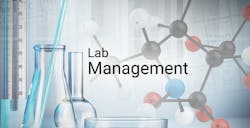At the national level, the reduction in overall healthcare costs is a high priority. Laboratory data accounts for nearly 80 percent of disease management decisions, so ensuring the quality of laboratory data has a ripple effect in controlling hospital expenditures. One of the advantages offered by molecular testing is the addition of value to existing health data, mainly through individualized medicine. With its evidence-based practices, personalized patient care through companion diagnostics can have significant cost benefits.
The aim of multiplexed molecular testing is the detection of multiple causative agents or abnormalities from a single clinical specimen. In contrast, focused single gene testing attempts to find the specific genetic abnormality to guide personalized therapeutics. Balancing these divergent goals is crucial in developing an efficient laboratory diagnostic workflow.
Information systems contribute to patient safety by enabling easy data exchange between the laboratory and other arms of the hospital to generate the least error-prone, most efficient processes possible. The exchange of objective data can also compensate for limited patient history and physical examination details. Risk estimation tools that measure the effect on patient safety can be used for the newer molecular assays before clinical implementation.
Identifying the laboratory steps that are most error-prone using Lundberg’s Total Testing Process (TTP) model led to the development of the initial laboratory workflows.1 Managing process variations well could avoid temporary stopgap measures that could transform into standard laboratory practices. The purpose, testing environment, volume and costs are other important considerations in laboratory workflows. Efficient workflows eliminate unwanted steps and thus standardize protocols, as well as training.
Automation and workflow
Automation of the total testing process allows precise time-stamping and error-free, legible entries that can be easily retrieved for future reference. Zero tolerance of data entry duplications and immediate transmission of results to electronic medical records (EMRs) are other advantages of automation. Automated laboratory testing, synchronized with hospital data management systems, results in efficient disease/health management workflow. The automatic population of the data and the ability to retrospectively analyze the test ordering pattern and results are major benefits of the adoption of laboratory information systems (LIS) into the diagnostic workflow. The interoperability of the LIS and the hospital information system avoids test over-utilization and redundant or incorrect test ordering and ensures follow-up of results and better management of the reflex testing per guidelines. Web-based electronic health records and ordering options offer simple and flexible solutions for information gathering and transfer within the shortest possible time to ensure physician adherence, and better and timely patient management.
The selection of an automation system depends on the workflow (continuous over the course of the day or batch testing), the specific patient population, and the availability of trained personnel in various shifts to operate the automated processes. To that last point, before introducing automation, a diligent assessment of the experience and the comfort level of the staff should be made. Automating only one shift, the dayshift for example, could complicate workflows and result in unwanted errors.
Workflow optimization carries benefits at the pre-analytical, analytical, and post-analytical stages. At the pre-analytical stage it can ensure error-free direct specimen testing (without pre-treatments) with rapid turnaround of results. Barcoded specimen collection entry has the downstream advantages of significant savings in the processing of results, allocation of resources, and length of stay. Pre-analytical workflow can be comprised of several laboratory section-specific processes—for example, automated digital microscopy to assess the percentage of tumor nuclei, or automated microbiology tools for specimen staining and processing; plate transportation; incubation; and imaging. Open configuration of the test protocols and point-of-care (POC) analyzers with communication capabilities to multiple software platforms simplify the workflow to manageable levels. In the testing phase, products that reduce quality control steps can add value, and reference methods can allow easy intra- and inter- laboratory comparisons and auto-tiling of results. Standardization of the post-analytical phase, including reporting of the results, also enhances efficient workflow.
Molecular diagnostics and automation
Thus, persuasive arguments can be made for the automation of laboratory processes in general. How, more specifically, does this apply to molecular diagnostics in clinical use? How can automation impact the MDx workflow?
During the selection phase of the molecular assays, several things need to be assessed: test volume; the need for manual specimen processing; the type of specimens to be run; the controls to be utilized; savings to be gained in both the turnaround time (TAT) and return on investment (ROI), when compared to a send-out test; and the population being targeted. In high-volume testing, a larger part of the workflow involving manual specimen processing is not desirable, even when the subsequent steps are carried out through automated analyzers. The integration of DNA/RNA sequencing, digital immunoassay, flow cytometry, genotyping, mass spectrometry, multiplex testing, qPCR, and proteomic, metabolomic, and epigenetic data into the diagnostic workflow requires higher image import/export, family pedigree, and data analysis capabilities. Comparative genomic hybridization arrays capable of combining single nucleotide polymorphism (SNP) and copy number variation detection are preferred in SNP genotyping workflow due to the reduced TAT.
In hematopathologic diseases such as myeloid or myeloproliferative disorders, targeted gene panels, whole exome sequencing, and whole genome sequencing have advantages over single gene testing in revealing multiple anomalies and in decreasing the TATs and costs. This is also true in the interrogation of solid tumors with such technologies. Flow cytometry is much more quantitative than immunohistochemical methods in determining the leukocyte alkaline phosphatase score and can also rule out chronic myeloid leukemia faster than outsourced molecular testing results. In the case of acute promyelocytic leukemia diagnosis, it is crucial to identify the t(15;17) by fluorescent in situ hybridization (FISH) as quickly as possible so that the specific therapeutic regimen can be administered to achieve best outcomes. Therefore, it is important to order the right test, in the right clinical context, either as a stat or with a regular TAT.
In the near future, the personalized selection of drugs based on biomarker patterns will become the norm rather than the exception in clinical practice. Identifying patients who would benefit from a particular disease prevention strategy will help in tailoring the clinical workflow. Extrapolation of findings from personalized medicine to larger public health initiatives could lead to increasingly cost-efficient clinical management practices. Gene expression levels used to segregate the anti-angiogenic drug responders and non-responders among ovarian cancer patients is one example of this approach. Identification of likely responders to companion diagnostic drugs for metastatic colorectal cancer with KRAS CDx test is another, and one that has been linked to substantial potential savings.2 Identifying events in the adjacent tissue of the original cancer may reveal the accurate micro-environment, to better understand the key cellular elements and pathways involved in tumor generation and progression. Similarly, re-engineering the workflow to allow the high-throughput purification of the circulating tumor cells or cell free DNA in blood to be tested by the next-generation sequencing (NGS) tools has recently become available to many labs, and thorough documentation of these efforts in the LIS is crucial.
MDx and the micro lab
Implementation of molecular methods into the microbiology workflow also requires a thorough evaluation of the benefits against the associated costs. Careful selection of the testing platforms, based on the needs of the hospital, is crucial. The conventional microbiology workflow involves sample preparation, processing, and the reading and interpretation of test results. The separation of certain activities and the unidirectional flow of staff and specimens are unique aspects of the microbiology laboratory workflow, and so is the necessity of additional workspace.
Workflow optimization can overcome the limitation of clinical specimen quantity to identify multiple infectious agents. Enclosed systems in the microbiology workflow not only can prevent contamination but also help generate rapid results. Molecular tests, in particular, were necessitated by reappearance of life-threatening infections such as Ebola virus and the unavailability of a single test to detect major infectious agents. Molecular methods, unique among testing options, allow rapid detection of organisms that are difficult to grow or to survive transport, especially if in low numbers.
Increased sensitivity, simultaneous detection of bacterial, viral, and parasitic agents and reduced TAT were the impetus for the use of multiplex molecular testing in gastrointestinal diseases. The workflow for testing for Trichomonas vaginalis, for instance, was simplified by the ability to utilize vaginal samples not restricted to collection by the clinician. The need for the most complete diagnostic solutions, sensitivity, specificity, and breadth of coverage has spurred adoption of multiplexed molecular testing in respiratory tract infections.3 Parasitic infections and allergic testing workflow are benefited by flow-through microarray technology combined with multiplexed nucleic acid/protein assays. By combining the pathogen detection and the resistance markers in a single automated procedure from native specimens, the micro lab has been able to avoid the initial culture step and put into effect a more efficient antibiotic testing workflow.
What may be next? Advanced clinical decision support systems that integrate the clinical and laboratory data for selection of the most appropriate personalized therapy are on their way. This workflow modification, with several supporting tools for the physician, has the potential to ensure continued error-free electronic laboratory orders, time and labor savings, and faster result generation. The future will see a narrowing of the traditional line of separation between laboratory sections (e.g., A1c testing on hematology analyzer from lavender top tube), and interoperability of laboratory and hospital data. Mobile apps are on the way that will be capable of executing laboratory functions that capture work orders, notes, images, and data analysis and export them to LIS. Home-based diagnostics is another emerging area in workflow optimization. In POC hemoglobin (Hb) testing, for example, translation of visual results into Hb values by the companion smart phone application will ensure self-monitoring of Hb values, similar to self-monitoring of blood pressure.
REFERENCES
- Epner PL, Gans JE, Graber ML. When diagnostic testing leads to harm: a new outcomes-based approach for laboratory medicine. BMJ Qual Saf 2013;22:ii6-ii10.
- Oakley III G. The future of oncology treatment through diagnostic testing. MLO. 2013;45(12):38.
- Bambach A, Powell S. Meeting the laboratory’s diagnostic needs for respiratory tract infections. MLO 2014;46(9):12-13.

